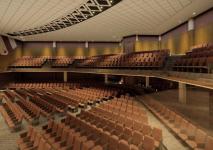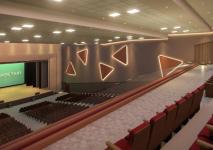Common acoustic issues faced by commercial cinemas
Common Acoustic Issues Faced by Commercial Cinemas:
Commercial cinemas are designed to provide an immersive and enjoyable movie-going experience for audiences. However, there are a number of acoustic issues that can impact the quality of the experience.
Echo and Reverberation
Echo and reverberation are two of the most common acoustic issues faced by commercial cinemas. Echo occurs when sound waves bounce off of hard surfaces and return to the listener. Reverberation occurs when sound waves bounce off of multiple surfaces and continue to be heard for a period of time. Both echo and reverberation can make it difficult to hear dialogue and can also make the sound quality seem muddy.
Sound Leakage
Sound leakage occurs when sound from the auditorium escapes into the surrounding areas. This can be a problem for cinemas that are located in close proximity to other businesses or residences. Sound leakage can also be a problem for cinemas that are located in noisy areas, such as near airports or train stations.
Poor Sound Distribution
Poor sound distribution occurs when the sound from the speakers is not evenly distributed throughout the auditorium. This can make it difficult for some audience members to hear the dialogue or the music. Poor sound distribution can also be caused by the shape of the auditorium or by the placement of the speakers.
Other Acoustic Issues
In addition to echo, reverberation, sound leakage, and poor sound distribution, there are a number of other acoustic issues that can impact the quality of the experience in a commercial cinema. These issues include:
- Bass buildup: Bass buildup can occur when the low-frequency sound waves from the speakers are not properly absorbed by the auditorium. This can cause the sound to become muddy and can also make it difficult to hear dialogue.
- Noise pollution: Noise pollution can be caused by a number of factors, including traffic, construction, and other businesses in the area. Noise pollution can make it difficult to hear the dialogue or the music and can also be a distraction for audience members.
- Ventilation noise: Ventilation noise can be caused by the fans and air conditioners in the auditorium. Ventilation noise can be a distraction for audience members and can also make it difficult to hear the dialogue or the music.
There are a number of ways to address acoustic issues in commercial cinemas. Some of the most common methods include:
- Using sound-absorbing materials: Sound-absorbing materials can help to reduce echo and reverberation. These materials can be placed on the walls, ceiling, and floor of the auditorium.
- Using a sound system: A good sound system can help to improve the quality of sound in an auditorium. The sound system should be designed for the size and shape of the auditorium, and it should be properly calibrated.
- Considering the shape of the auditorium: The shape of the auditorium can also have a significant impact on the acoustics. A rectangular auditorium with parallel walls will create more echo and reverberation than an auditorium with a curved or angled ceiling.
- Consulting with an acoustician: If you are serious about addressing acoustic issues in your commercial cinema, it is a good idea to consult with an acoustician. An acoustician can help you to design an auditorium that sounds its best and meets your specific needs.



